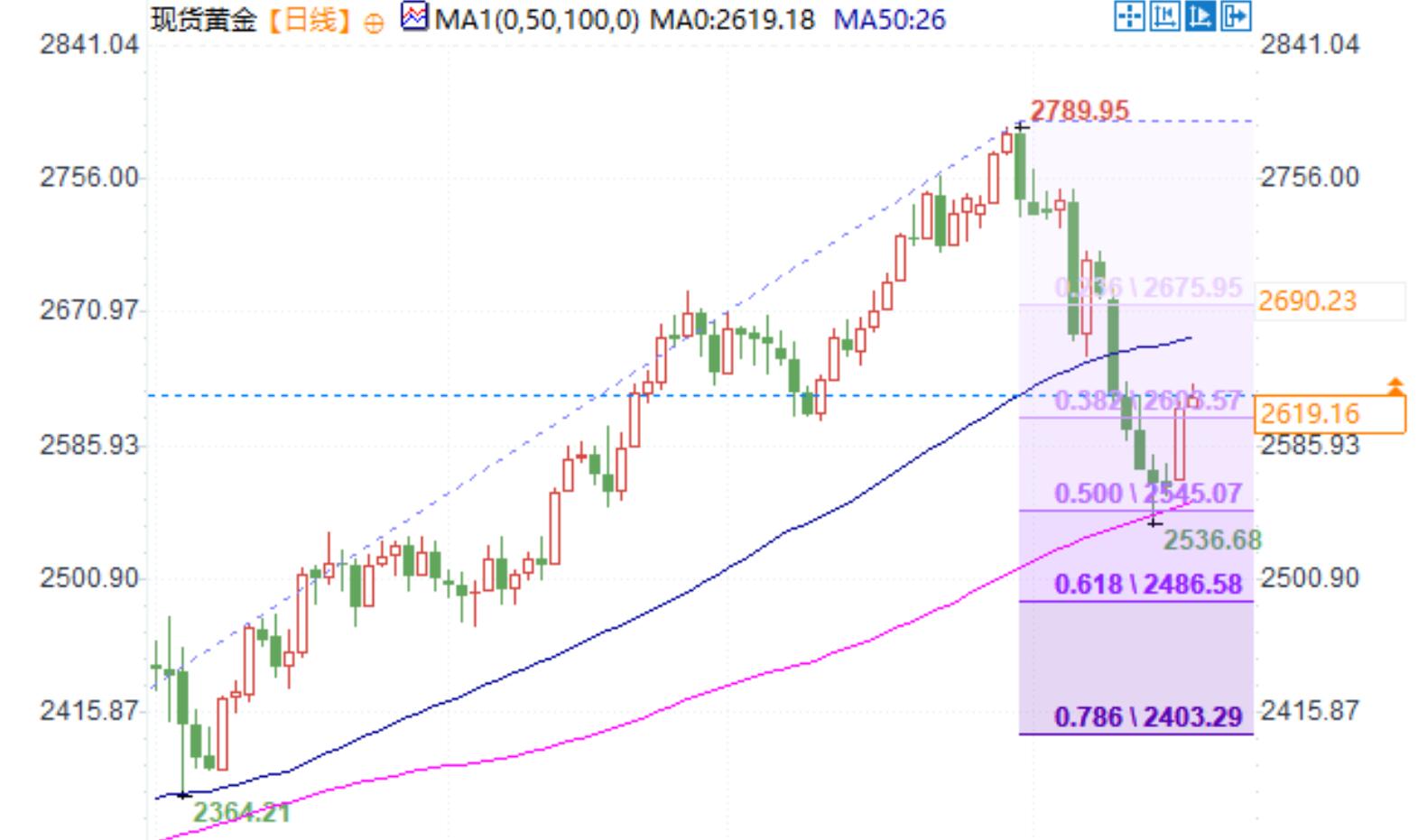Can gold still rise? Risk aversion is heating up, but the Federal Reserve's policy has become a bullish "roadblock"
On Tuesday (November 19th), gold prices maintained a strong trend, with spot gold hovering around $2620 as of early trading in Europe, slightly below the one week high reached overnight. Since the beginning of this week, geopolitical risks have continued to drive safe haven sentiment, but the market's cooling expectations for the Fed's dovish policies have suppressed further upward potential for gold prices.
Market background: Risk aversion intertwined with policy expectations
The escalation of the Russia Ukraine situation has intensified market concerns about the worsening geopolitical situation. In addition, the situation in the Middle East has not yet eased, and these two major geopolitical risks have become the main driving force for gold's safe haven attributes. However, at the same time, the expected policy path of the Federal Reserve has put considerable pressure on gold.
Federal Reserve Chairman Powell and several Fed officials have recently expressed caution, implying that they will not further increase interest rate cuts in the short term. The market has rebounded from previous expectations of aggressive policy easing, which has led to high US bond yields and a certain drag on interest free asset gold.
Latest market trends and technical analysis
On a technical level, the price of gold has rapidly stabilized since falling below the 100 day simple moving average (SMA) last week and rebounded past the 23.6% Fibonacci retracement level (corresponding to a pullback since historical highs), currently holding steady at the $2600 level. Technical indicators show that although gold prices have short-term rebound momentum, their upward potential may be suppressed by strong resistance in the $2634-2635 range, which is also where the 38.2% Fibonacci retracement level is located.
If the resistance range mentioned above is broken, it may trigger a bullish retracement in the short term, pushing gold prices to further test the pressure range of $2655-2657, and even challenge the higher target of $2665. However, $2600 below is still a key support, and once it falls below, bears may take the opportunity to expand their attack, and gold prices will face the risk of falling to $2569 or even $2550.

News: Focus on the Federal Reserve and Economic Data
The recent policy expectations of the Federal Reserve have a significant impact on the gold market. On the one hand, the cautious attitude of senior officials of the Federal Reserve towards interest rate cuts has supported the trend of the US dollar, allowing it to maintain its strength even after adjusting from its high point this year. On the other hand, US real estate data and today's speech by the President of the Kansas Federal Reserve will become the focus of market attention, as investors attempt to glean more signals about the Fed's future policies from them.
In addition, the US manufacturing and service PMI data to be released this Friday may also provide more economic momentum signals for the market. Especially as the new Trump administration is about to take office, the market's response to its potential expansionary economic policies has become crucial. These policies may push up inflation expectations, thereby limiting the Federal Reserve's room for further easing.
Institutional viewpoint: Short term rebound with variables
Renowned institutions believe that the current rebound in gold prices is mainly driven by safe haven sentiment, but the Federal Reserve's policy expectations still limit bullish confidence. In terms of operational strategy, they emphasized that "if the gold price can continue to stand above $2600, it may further attract technical buying. However, if it falls below this level, bulls should be cautious and avoid short-term risks
Technical analysts pointed out that the Oscillator indicator shows that the daily level gold price is still recovering, but a clear upward trend signal has not yet been formed. In the short term, attention still needs to be paid to the competition for key support and resistance levels.
Summary: Focus on policies and data
Overall, the gold market is currently in a tug of war between risk aversion and policy expectations, and its short-term trend may continue to fluctuate. Despite the geopolitical situation providing support for gold prices, the cooling of dovish expectations from the Federal Reserve is constraining bulls. Market participants need to closely monitor this week's economic data and speeches by Federal Reserve officials, especially the technical support performance of $2600 and the breakthrough of the resistance of $2635, which will determine whether gold prices can continue to rebound.
The key events in the coming days include the release of US economic data and updates from the Federal Reserve. Investors are advised to stay vigilant and be wary of the impact of sudden changes in market sentiment on price fluctuations.
Tips:This page came from Internet, which is not standing for FXCUE opinions of this website.
Statement:Contact us if the content violates the law or your rights
